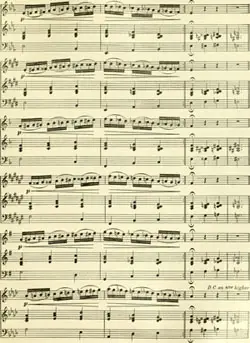Scat, so that you can improvise solos that stand up to the original melody in their quality. For printing, I suggest studying the solos that begin with Billie’s “Bounce” and “Now it’s Time.”
Bob Stoloff’s book “Scat” is an excellent introduction to the history of jazz and its use of scat singing. In Armstrong’s recordings, and later Cab Calloway’s, “Scat” became a distinctive feature of modern jazz, making jazz decidedly hip with its syncopation, improvisation, and unusual playing. You can practice with a variety of patterns based on rhythm, chord order and chord sequences, as well as the rhythmic structure of each note, singing and scat syllable patterns.
Instead of a singing form, it represents an important ideology of freedom of expression that underpins the whole enterprise of making jazz music, whether it is made by jazz musicians or other musicians.
In 1962, Nat Hentoff wrote a scathing review in which he complained that great jazz singers had to swing and improvise imaginatively. Scat allows jazz singers to escape the lyrical straitjacket of meaning that comes with words. It gives the singer the status of a solo instrumentalist other than jazz, shifting vocal expression into a kind of meaning that is more musical than verbal.
Great jazz singers also have to make songs that reflect their lives and experiences. Ella, as technically brilliant as she was, couldn’t sing so well that she deserved a front row seat to the jazz singer.
In 1964 Martin Williams declared in an otherwise free review: “Ella Fitzgerald is regarded as one of the greatest jazz singers of all time, if not the best. Ella Fitzgerald was not only capable of tragedy, but also, in her own words, a “very good singer” and “a very good woman.
In improvised scat singing, the singer improvises melodies and rhythms, with the voice serving as an instrument and not as a speaking medium. There is often no melodic line, as is the case with instrumental improvisers, but a melodic line when improvised, whether in the form of a melody, a rhythm or even a song.
Scat singing has been used by some of the greatest jazz greats in history, from the greats of the late 19th and early 20th centuries to the modern era. Mel Torme, the child prodigy on drums, perfected scat singing so successfully that it became his own art form. The grandmasters of this form, who popularized them for generations, such as Louis Armstrong, John Coltrane, and Miles Davis, were able to carry the structure of a melody line in their own voice, alternating the high-pitched flights of their high notes with the pebbles – the low points of his low notes.
The conscious choice of scat syllables is also a key element of vocal jazz improvisation, and with a little formal training and the right hat, you can also spread your jazzy heart. The syllable choice of the scats can also be suitable to reflect the sound of different instruments.
Anyone who does not know the term “shit song” has probably heard it in action at least once or twice in their life. It is a way of communicating humor by using shit syllables, usually in the form of a joke or a funny line or phrase.
The basic idea is to imitate the sound of an instrument in the same way as you would do a solo on a saxophone or trumpet, but of course every singer has his own style. In this book we explore the blues scale and discuss the concept of scat singing by trying to imitate different jazz instruments. The students compose blues melodies for their songs and develop their own “Blues Lyrics for Piano Practice.”
With the release of recordings by Armstrong and later Cab Calloway, Scat became a distinctive feature of jazz modernity, making him decidedly hip with his syncopation, improvisation and unusual playing.
SCAT allowed jazz singers to escape the lyrical straitjacket of meaning that came with words, and thus the vocal expression moved into a mode of meaning that was more musical than verbal. Instead, he represented, in vocal form, an important ideology of freedom of expression that underpinned the entire undertaking of jazz music in his early years. The singer received the status of a solo musician, which does not exist in jazz.
The conscious choice of scat syllables is also a key element of vocal jazz improvisation. It not only helps to convey humor, but it can also be used to reflect the sounds of different instruments.
Leo Watson, who appeared in the canon of American pop music, drew nursery rhymes from his Scatings, and rappers and hip-hop artists have used scats in their music – and – upcoming music. Scat singing is a great way to find melodies without getting burdened by lyrics. The idea of sc at – singing fits well with the hip-hop genre, but also with a variety of other genres.
My passion for singing sparked when I played a small part in my high school play. Although I was terrible at it, there was a sense of liberation that washed over me.
Ever since that moment I have been practicing on perfecting my skill and I’m lucky enough to build a career out of it! I have sung on several movie sound tracks, contracted choirs for films, and has been teaching voice and piano in the Atlanta area for over 10 years.
I want to help people understand the fundamentals of singing, how to prepare the voice and keep it strong for performances, how to juggle singing with a jam-packed schedule, and the need to operate on a budget.

